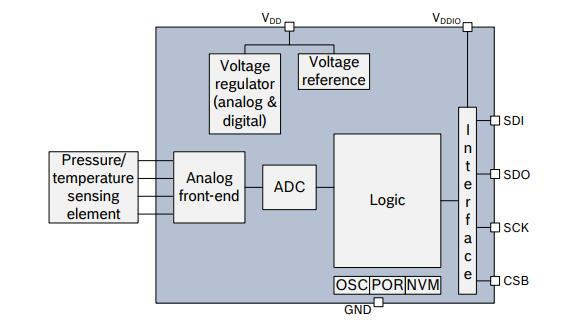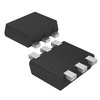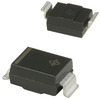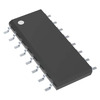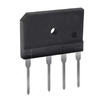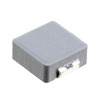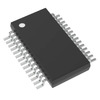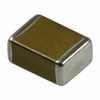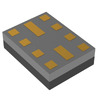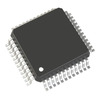Exploring the BMP280 Sensor
The BMP280 Digital Pressure Sensor is a testament to precision and innovation, revolutionizing how we measure and analyze atmospheric pressure and altitude. Renowned for its accuracy, energy efficiency, and adaptability, this sensor applies to diverse fields such as environmental monitoring, weather forecasting, and advanced navigation systems. Its ability to seamlessly integrate into modern technologies highlights its importance in shaping contemporary solutions for both consumer and industrial needs. This article explores the BMP280’s features, technical specifications, and applications, showcasing its key role in advancing smarter, more connected environments.Catalog

Pin Configuration

|
Pin |
Name |
I/O Type |
Description |
Connect to |
||
|
(SPI 4W) |
(SPI 3W) |
(I²C) |
||||
|
1 |
GND |
Supply |
Ground |
GND |
||
|
2 |
CSB |
In |
Chip select |
CSB |
CSB |
VDDIO |
|
3 |
SDI |
In/Out |
Serial data input |
SDI |
SDI/SDO |
SDA |
|
4 |
SCK |
In |
Serial clock input |
SCK |
SCK |
SCL |
|
5 |
SDO |
In/Out |
Serial data output |
SDO |
DNC |
GND (for default address) |
|
6 |
VDDIO |
Supply |
Digital interface supply |
VDDIO |
||
|
7 |
GND |
Supply |
Ground |
GND |
||
|
8 |
VDD |
Supply |
Analog supply |
VDD |
||
CAD Model
Symbol
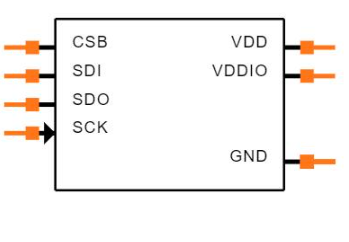
Footprint
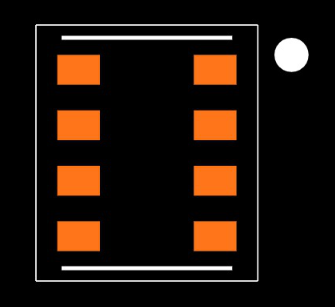
Overview of BMP280
The BMP280 is an advanced absolute pressure sensor designed for portable devices, offering a balance of compactness and energy efficiency. Its slim profile makes it an excellent choice for integration into modern electronics like smartphones and GPS devices. By providing precise environmental data with high responsiveness, the BMP280 establishes itself as a basic component in applications demanding accuracy, especially in fitness tracking, navigation, and environmental monitoring.
One of the BMP280's standout features is its energy efficiency, a serious factor in portable devices where battery longevity is dominant. With its low power consumption, the sensor extends device usage times, meeting the demands of you who prioritize long-lasting performance. In addition, its compact design simplifies integration into space-constrained circuitry, helping you maximize functionality while minimizing size—an increasingly chief requirement in today’s trend toward miniaturization.
The BMP280 also enhances your experience in specialized applications, such as altitude measurement for fitness tracking and elevation data for GPS navigation. You can benefit from the sensor's accurate pressure readings, which improve location precision and enrich activities like hiking or cycling. Integrating the BMP280 into devices, however, presents challenges like ensuring compatibility with existing systems and maintaining signal integrity, requiring a meticulous design approach and a deep understanding of electronic circuitry.
Technical Specifications
|
Type |
Parameter |
|
Factory Lead Time |
14 Weeks |
|
Package / Case |
8-SMD |
|
Surface Mount |
YES |
|
Mounting Feature |
SURFACE MOUNT |
|
Operating Temperature |
-40°C ~ 85°C |
|
Packaging |
Tape & Reel (TR) |
|
Published |
2014 |
|
Part Status |
Active |
|
Moisture Sensitivity Level (MSL) |
1 (Unlimited) |
|
Applications |
Board Mount |
|
Additional Feature |
IT ALSO HAS 3-WIRE INTERFACE |
|
Voltage - Supply |
1.71V ~ 3.6V |
|
Output |
16b |
|
Termination Style |
SMD (SMT) Tab |
|
Body Length or Diameter |
2.5mm |
|
Body Breadth |
2 mm |
|
Output Type |
I2C, SPI |
|
Number of Bits |
20 |
|
Accuracy |
±0.015PSI (±0.1kPa) |
|
Response Time |
2000 μs |
|
Operating Pressure |
4.35PSI ~ 15.95PSI (30kPa ~ 110kPa) |
|
Pressure Type |
Absolute |
|
Port Style |
No Port |
|
Maximum Pressure |
290.08PSI (2000kPa) |
|
Sensors/Transducers Type |
PRESSURE SENSOR, PEIZORESISTIVE |
|
Pressure Range-Max |
15.95 Psi |
|
Features |
Standby Mode |
|
Body Height |
0.95mm |
|
RoHS Status |
ROHS3 Compliant |
|
Lead Free |
Lead Free |
Applications
The BMP280 sensor notably increases the precision of GPS systems, leading to improved time-to-first-fix calculations. This enhancement proves beneficial across a variety of use cases where precision plays a notable role, including autonomous driving and drone navigation. Furthermore, the sensor's capacity to identify different floors simplifies elevator operations and extends its applicability in indoor navigation, ensuring smooth transitions for you moving through intricate structures. Such accuracy becomes especially advantageous for individuals traversing expansive venues like shopping malls, airports, and hospitals, where effective wayfinding contributes to a more pleasant experience.
Indoor Navigation and Multi-Level Recognition
Within indoor navigation, the BMP280 serves as a dynamic tool by utilizing barometric pressure to detect changes in altitude. This feature is instrumental in crafting detailed maps of indoor spaces, facilitating path optimization that factors in your vertical movements. For instance, individuals in a skyscraper can leverage apps that utilize BMP280 data to efficiently locate the fastest routes to specific floors or facilities, ultimately conserving time and boosting productivity. These advancements can be observed in numerous smartphone applications designed to tackle the complexities of indoor navigation.
Outdoor Activities and Sports Tracking
In the context of outdoor recreation and sports tracking, the BMP280’s ability to offer actual vertical speed assessments stands out prominently. Whether engaging in hiking, cycling, or skiing, you can keep a close watch on their elevation changes along with other performance metrics. Such insight transforms mere numbers into valuable feedback, significantly shaping training practices and performance evaluations. You can often rely on analytics to adjust your techniques and strategies based on vertical performance factors. For example, you can determine their optimal pacing by analyzing vertical elevation changes throughout a trail run, thus enhancing their energy management during events.
Weather Prediction and Environmental Monitoring
The BMP280 sensor's versatility also reaches into the world of weather forecasting and environmental observation. By gauging atmospheric pressure, it plays a role in predicting weather shifts, empowering communities to brace for potentially severe conditions. This application goes beyond notional benefits; numerous weather-dependent industries, including agriculture, actively harness this technology to monitor weather trends that dictate planting and harvesting decisions. Additionally, insights from the BMP280 aid in better decision-making strategies across diverse sectors, encompassing areas such as disaster management and tourism.
Integration with Smart Devices
Exploration into the integration of BMP280 with smart devices presents promising opportunities. As the Internet of Things (IoT) progresses, the need for advanced environmental sensors continues to grow. The BMP280’s ability to deliver precise altitude and pressure data can significantly amplify the capabilities of smart home technologies. For example, air quality sensors can dynamically adjust to outdoor atmospheric conditions, optimizing indoor climate control for enhanced comfort and well-being.
Devices Compatible with BMP280
The BMP280 is engineered to seamlessly integrate into various consumer electronics. Among these are smartphones, GPS modules, and tablet PCs. This sensor's compact design and reliable performance cater to mobile innovations demanding precise barometric pressure and temperature data. Its versatility extends to home weather stations, flying toys, and watches, emphasizing the sensor's relevance in contemporary technology landscapes.
A notable attribute of the BMP280's design is its capability to deliver precise atmospheric data. This skill elevates navigation and location-based services, highlighting your experiences in weather monitoring and indoor climate management. Practically, integrating the BMP280 into home weather stations empowers you with localized weather forecasts, a feature increasingly valued in our climate-aware society.
In flying toys, the BMP280 unlocks new technological interactions, especially appealing to you. By embedding this sensor, you can create responsive flying devices that adapt to environmental changes, promoting a deeper grasp of meteorological concepts in a playful setting. This fusion of learning and amusement mirrors broader shifts in consumer electronics, where products transcend functionality to cultivate knowledge.
Operational Techniques
|
Mode |
Description |
|
Sleep Mode |
No measurements are performed. The sensor remains in a
low-power state. |
|
Normal Mode |
Automated perpetual cycling between an active measurement
period and an inactive standby period. |
|
Forced Mode |
A single measurement is performed. Once the measurement
is completed, the sensor returns to sleep mode. |
Functional Block Diagram
Evaluating the BMP280 and BMP180
The BMP280 is a high-performance successor to the popular BMP180, offering remarkabe improvements in precision and versatility for pressure measurement applications. With advancements such as lower noise levels, support for advanced filter modes, and the addition of an SPI interface, the BMP280 provides enhanced functionality within a compact footprint, 63% smaller than the BMP180. These features make the BMP280 ideal for emerging applications in indoor navigation, fitness tracking, and GPS enhancement, where high relative accuracy and a low total cost of ownership (TCO) are serious.
Both the BMP180 and BMP280 excel in applications requiring high precision, such as floor detection, thanks to their exceptional relative accuracy of ±0.12 hPa, equivalent to ±1 meter in altitude. Furthermore, their low offset temperature coefficient (TCO) of 1.5 Pa/K results in a minimal temperature drift of just 12.6 cm/K, ensuring reliable performance across temperature variations.
This enhanced comparison clearly highlights the strengths and advancements of the BMP280 over the BMP180 while maintaining the practical relevance of both sensors for precision-based applications.
|
Parameter |
BMP180 |
BMP280 |
|
Footprint |
3.6 × 3.8 mm |
2.0 × 2.5 mm |
|
Minimum VDD |
1.80 V |
1.71 V |
|
Minimum VDDIO |
1.62 V |
1.20 V |
|
Current consumption @ 3 Pa RMS noise |
12 μA |
2.7 μA |
|
RMS Noise |
3 Pa |
1.3 Pa |
|
Pressure resolution |
1 Pa |
0.16 Pa |
|
Temperature resolution |
0.1°C |
0.01°C |
|
Interfaces |
I²C |
I²C & SPI (3 and 4 wire, modes "00" and
"11") |
|
Measurement modes |
Only P or T, forced |
P & T, forced or periodic |
|
Measurement rate |
Up to 120 Hz |
Up to 157 Hz |
|
Filter options |
None |
Five bandwidths |
Packaging
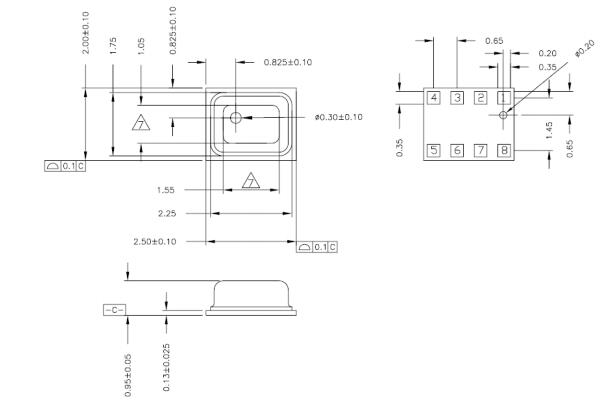
Manufacturer
Bosch Sensortec GmbH, a branch of Robert Bosch GmbH, leads the way in the creation of MEMS-based sensors. These devices are basic to empowering mobile technology to engage dynamically with its surroundings. They enrich the features of modern consumer electronics, such as smartphones and smart home systems, and support a variety of IoT applications with enhanced functionality.
The evolution of Micro-Electro-Mechanical Systems (MEMS) technology has intensely reshaped the face of consumer electronics. Known for their compact size, superior integration capabilities, and advanced performance, these sensors are perfectly attuned to the shifting needs of the IoT landscape. They facilitate immediate data gathering and environmental interaction, enabling applications from weather forecasting to interior guidance systems.
Specifically, the BMP280 sensor excels in its ability to precisely measure temperature and atmospheric pressure. This accuracy proves invaluable across a range of uses, including meteorological stations, unmanned aerial vehicles, and personal health monitoring devices. By integrating BMP280 sensors, you can create innovative products that deliver refined your experiences and provide deep insights into environmental conditions.
Datasheet PDF
BMP280 Datasheets:
BMP180 Datasheets:
About us
ALLELCO LIMITED
Read more
Quick inquiry
Please send an inquiry, we will respond immediately.
Frequently Asked Questions [FAQ]
1. What is BMP280?
The BMP280 represents a sophisticated advancement in barometric pressure sensing technology, designed specifically for mobile applications. Its streamlined design allows for easy integration into energy-efficient devices such as smartphones, GPS gadgets, and wearable technology. However, the influence of the BMP280 extends far beyond simple device functionality—it plays a key role in various contexts, from weather forecasting to altitude measurements. This versatility illustrates how sensors like the BMP280 contribute to a more interconnected and responsive world, enhancing your experiences in subtle yet impactful ways that often go unnoticed.
2. What defines a barometric sensor?
Barometric pressure sensors are advanced instruments adept at measuring fluctuations in atmospheric pressure. They incorporate a range of materials and sensing methodologies tailored to meet the demands of different applications, ensuring they can accurately respond to instantaneous environmental changes. Grasping the ultimate principles behind these sensors uncovers the delicate balance of accuracy, reliability, and energy efficiency. Actual applications, including altitude monitoring in aviation and predictive weather models, reveal the undeniable significance of these sensors. Their value is further illuminated by historical experiences across various industries, emphasizing their role in fostering technologies that prioritize safety, convenience, and operational efficiency.
3. How about the BMP280?
The BMP280 stands out for its exceptionally low energy consumption, requiring merely 2.7 μA at a sampling rate of 1Hz. This characteristic makes it especially suitable for energy-saving mobile devices, which encompass a diverse range of handheld electronics and personal navigation tools. The impressive operational efficiency of the BMP280 embodies a merger of innovation and sustainability, where technological breakthroughs increasingly accommodate energy conservation objectives. As one assesses the sensor's features, the combination of low power demands and high precision emphasizes the engineering principles that facilitate the development of smarter, more efficient technologies. Such progress ignites the vision of a future in which technology not only fulfills your needs but also responds to broader environmental concerns.

How to Choose Between BC547 and 2N2222
on November 20th

All About TL594: Features, Design, and Uses
on November 20th
Popular Posts
-

What is GND in the circuit?
on January 1th 3291
-

RJ-45 Connector Guide: RJ-45 Connector Color Codes, Wiring Schemes, R-J45 Applications, RJ-45 Datasheets
on January 1th 2826
-

Understanding Power Supply Voltages in Electronics VCC, VDD, VEE, VSS, and GND
on November 20th 2687
-

Fiber Connector Types: SC Vs LC And LC Vs MTP
on January 1th 2271
-

Comparison Between DB9 and RS232
on January 1th 1891
-

What Is An LR44 Battery?
Electricity, that ubiquitous force, quietly permeates every aspect of our daily lives, from trivial gadgets to life-threatening medical equipment, it plays a silent role. However, truly grasping this energy, especially how to store and efficiently output it, is no easy task. It is against this background that this article will focus on a type of coin cell battery that may seem insignificant on the...on January 1th 1849
-

What Is RF and Why Do We Use It?
Radio Frequency (RF) technology is a key part of modern wireless communication, enabling data transmission over long distances without physical connections. This article delves into the basics of RF, explaining how electromagnetic radiation (EMR) makes RF communication possible. We will explore the principles of EMR, the creation and control of RF signals, and their wide-ranging uses. The article ...on January 1th 1818
-

Understanding the Fundamentals:Inductance Resistance, andCapacitance
In the intricate dance of electrical engineering, a trio of fundamental elements takes center stage: inductance, resistance, and capacitance. Each bears unique traits that dictate the dynamic rhythms of electronic circuits. Here, we embark on a journey to decipher the complexities of these components, to uncover their distinct roles and practical uses within the vast electrical orchestra. Inductan...on January 1th 1817
-

CR2430 Battery Comprehensive Guide: Specifications, Applications and Comparison to CR2032 Batteries
What is CR2430 battery ?Benefits of CR2430 BatteriesNormCR2430 Battery ApplicationsCR2430 EquivalentCR2430 VS CR2032Battery CR2430 SizeWhat to look for when buying the CR2430 and equivalentsData Sheet PDFFrequently Asked Questions Batteries are the heart of small electronic devices. Among the many types available, coin cells play a crucial role, commonly found in calculators, remote controls, and ...on January 1th 1806
-

Comprehensive guide to hFE in transistors
Transistors are crucial components in modern electronic devices, enabling signal amplification and control. This article delves into the knowledge surrounding hFE, including how to select a transistor's hFE value, how to find hFE, and the gain of different types of transistors. Through our exploration of hFE, we gain a deeper understanding of how transistors work and their role in electronic circu...on November 20th 1796
